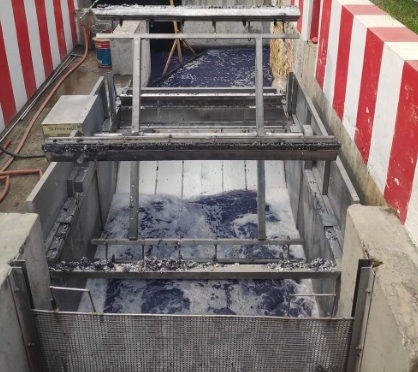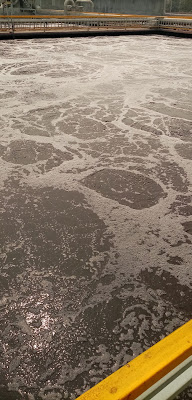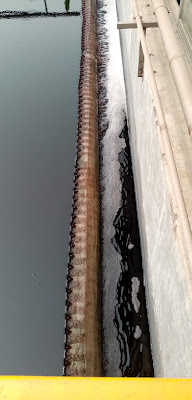What is an effluent treatment plant?
- The effluent treatment plant is a wastewater treatment method and the purpose of ETP is to process the industrial wastewater and remove harmful materials and germs as much as possible before releasing it to the water bodies. This treatment aims to make the wastewater as environment friendly as possible.
- There can be different types of treatment for wastewater. Such as- chemical, biological, biochemical, etc.
Why the effluent treatment plant is a must for textile industries?
- The textile industry is considered to be the second-highest pollution-causing industry in the world. Every day, a large amount of wastewater stream or effluent is produced in the textile industry and that stream is highly dangerous for the industry.
- In the textile industry, effluent can be produced from scouring, bleaching, mercerizing, dyeing, finishing sections. In all these treatments, different types of chemicals are being used. If that wastewater stream is being released into the water bodies untreated, then it will cause great harm to the animals living in the water and also to the people living near the water body.
What is the benefit of the effluent treatment plant (ETP)?
- ETP kills the pathogens and other potentially harmful elements in the water. Thus reducing public health hazards.
- It reduces the deteriorative impact on water bodies. It helps to retain the average water quality. As a result, animals living in water can survive.
- It can be recycled for further non-domestic use.
- It can be reused in some processes in the textile industry. As a result, the freshwater requirement can be reduced.
The effluent treatment plant in the textile industry: Biological effluent treatment plant
- The biological wastewater treatment plant is the most common in the textile industry. The wastewater that is produced in various sections of the textile industry come to the treatment plant that covers a large area. In that plant, water passes through several processes before discharging it to the local water body.
Some characteristics of the biological treatment plant:
- It is especially suitable in those industries where the dyeing process is included.
- It requires a large area due to higher retention time. The retention time for the biological treatment plant is 48 hours.
- The initial construction cost is high.
- Operation cost is lower compared to chemical ETP.
Stages of wastewater treatment:
The treatment of wastewater is done in various stages.
1. Pre-treatment.
2. Primary treatment.
3. Secondary treatment.
4. Tertiary treatment.
Pre-treatment:
- Treatment is done in a physical method.
- The purpose of pre-treatment is to remove large solids like- rags, ticks, grit etc.
- These large solids can damage various equipment in later stages and cause operational problems.
Steps in preliminary treatment:
Screening:
It is the first stage of wastewater treatment. The screening device has uniform openings and a rotating device inside to separate all the big floating or non-floating solids.
 |
| Screening unit |
Grit Chamber:
It is not a compulsory unit in textile ETP. It is used to remove the smaller particles like sand and other inorganic and non-putrescible solids that may clog pipes and damage equipment in later stages.
Equalization unit:
After passing through the screening/grit chamber, the wastewater enters in the equalization unit. The purpose of this unit is to flow the water at a constant rate. So, that it can become easier to process the water. Also, oxygen passing through the water starts in this stage.
Primary treatment:
- The purpose of primary treatment is to remove both the floating and settle able materials.
- Both organic and inorganic wastes are removed in this stage.
- It removes around 70-80% of suspended solids and 25-30% of BOD.
- Treatment is done in both physical and chemical methods.
Steps in primary treatment:
PH control unit/neutralization tank:
The purpose of PH control unit is to set the proper PH level for the wastewater. Oxygen is continuously passed through the water. 98% sulfuric acid is added to the water to get the proper PH.
Cooling unit:
After adding acid the water becomes extremely hot which is unsuitable for the survival of bacteria. So, the water is sent to the cooling unit. In the cooling unit urea, di-ammonium phosphate, and an antifoaming agent is added to the water.
Secondary treatment:
- Biodegradable organic matter and suspended solids are removed.
- Aerobic process is used.
- Removes more than 85% of organic solids.
Steps in secondary treatment:
Aeration tank:
The aeration tank is the heart of ETP. There are several aeration tanks in the plant. All of them have the same purpose. Oxygen is passed through the water. The bacteria that are present in the water decomposes the waste through aerobic reaction. To initiate the process. Some activated sludge is introduced in the aeration tank as seed. In this process waste, organic matters are quickly separated from the wastewater as sludge. This is a very low cost and efficient system.
 |
| Aeration |
Sedimentation tank:
From the aeration tank, the wastewater goes to the sedimentation tank where the water is kept in a still condition to get the sludge as sediment. To speed up the process, salt is added to the water. Salt is an electrolyte that acts as a coagulating agent. From this sedimentation tank, some sludge is sent to the neutralization unit as seed.
Sludge thickening unit:
From the sedimentation tank, sludge
is sent to the sludge thickening unit. Here, the sludge sediments at the bottom
and water comes at the top. This overflown water is again sent to the equalization
unit for treating again.
 |
| Liquid overflow |
Sludge dewatering unit:
The sludge from the bottom of
sludge thickening unit is sent to sludge dewatering unit where belt press
machine is used to remove all the water from the sludge and the sludge is given
a brick shape.
Later process:
- Water runs for 24 hours in the ETP before releasing to the water body.
- Sludge is stored for 6 months before disposing.






0 Comments